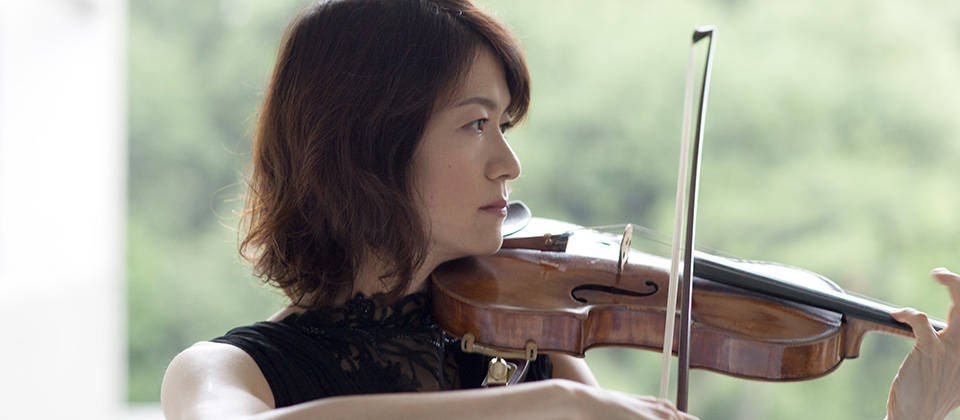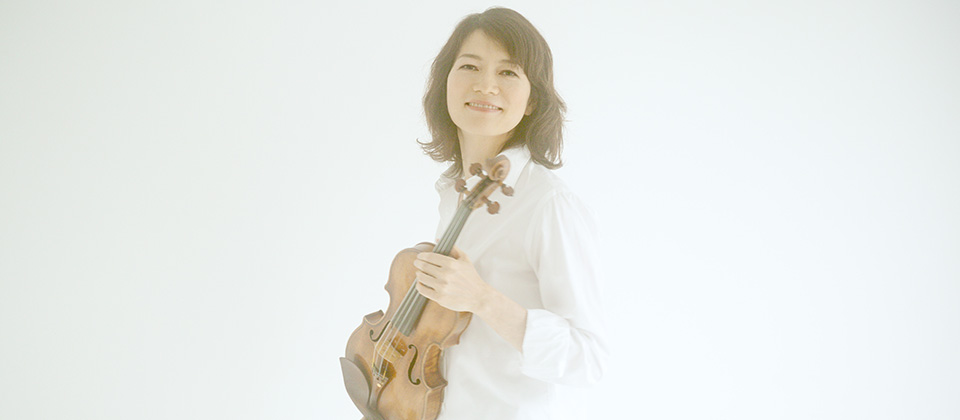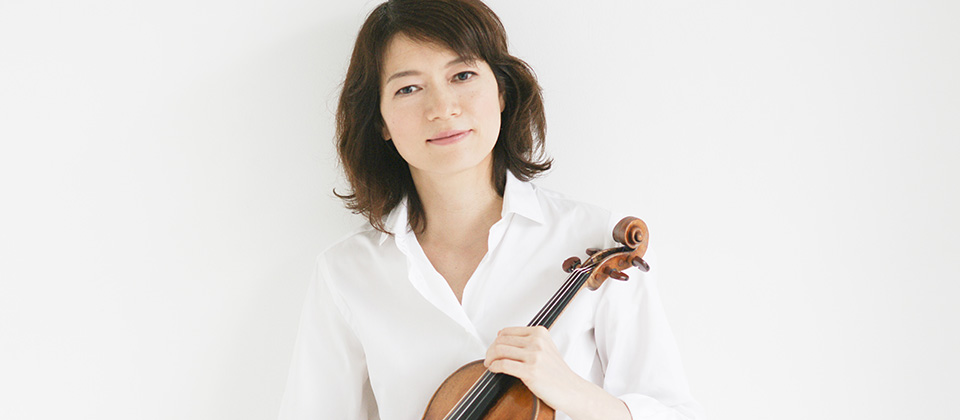NEWS
Music of Mie Kobayashi
She is kind and friendly. She is a type of person who thinks of others before she thinks of herself.
Can such a nice lady be an artist, one tends to wonder.
But, once she holds a violin, her facial expression suddenly changes.
It is as though she is possessed with music. She is so concentrated we feel we are held away from her.
The violin is the queen of musical instruments. It makes a beautiful sound in a high tone.
We are enamored of a soprano in an Italian opera who plays the role of a heroine
with her beautiful voice and various techniques (coloratura).
People expect a violinist, the heroine, to have a strong "character".
There are various types of characters. Some are strong in technique and some excel in musicality.
Some are "passionate" and some are "cool". Some are Bach specialists and some are Paganini specialists.
Some are soloist-type and some are ensemble-type.
In these days, musicians often try to differentiate themselves by emphasizing such "character".
But if by character is meant adding or deducting certain aspects of music,
Mie Kobayashi does not necessarily fit such a characterization.
She has a wide repertoire which covers almost all the important Western classical works for the violin.
But she is never nonchalant about the character or the style of each work.
She plays any work with utmost sincerity.
She places her personality and technique totally at the service of the music.
We feel the musical spirit in her lively performance.
We see the universality of human being and music.
All her recordings are worth listening to time and again.
She only records the pieces that she believes will do herself justice.
There is always the strong persuasiveness supported by her strong will.
Her Kreisler pieces are charming and her Zigeunerweisen brilliant.
She plays Debussy, Ravel and other French works wonderfully, of course.
But here I would like to touch upon a couple of her other outstanding performances on CD.
Enescu's violin sonata No. 3. This is a masterpiece by Enescu who was also a first-rate violinist himself.
The sonata is a challenging piece known for its heavy notations in the score and
various techniques for special violinistic sound effects.
That Mie Kobayashi shows elaborate and flawless workmanship is a feat.
But what counts most is her ability to bring the Romanian folk-inspired music to life supported
by her Japanese sensitivity.
Bach's unaccompanied Sonata No. 1 and Partita No. 2 and No. 3.
Mie Kobayashi in her mid-30s played Bach's "deified" pieces in a spontaneous manner.
In the liner notes she uses the expression "reverence for Bach".
In this CD, she is free from tension and the music comes completely naturally,
even when she plays the famous Chaconne. Who would not be moved by this pure and lucid performance?
Recently she is more assertive in her interpretation of Bach (which is an admirable development),
but this unaffected performance is no less compelling.
Mie Kobayashi will keep on evolving.
(end)






